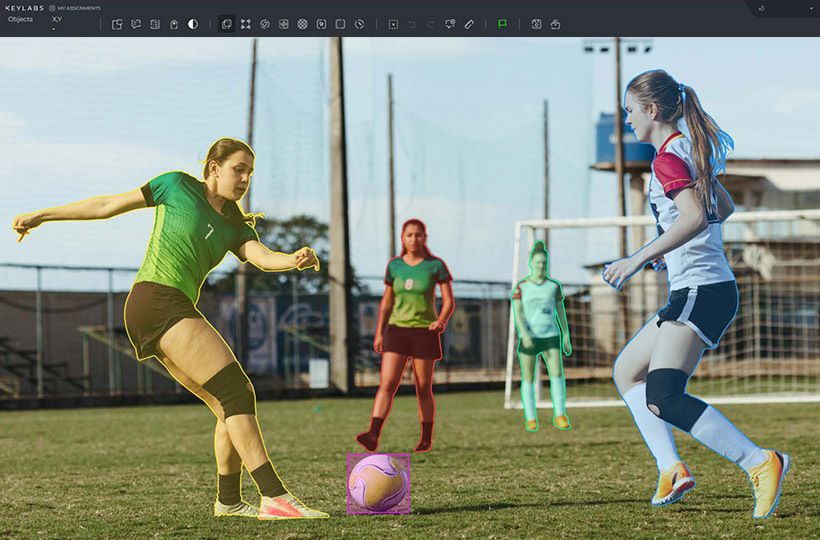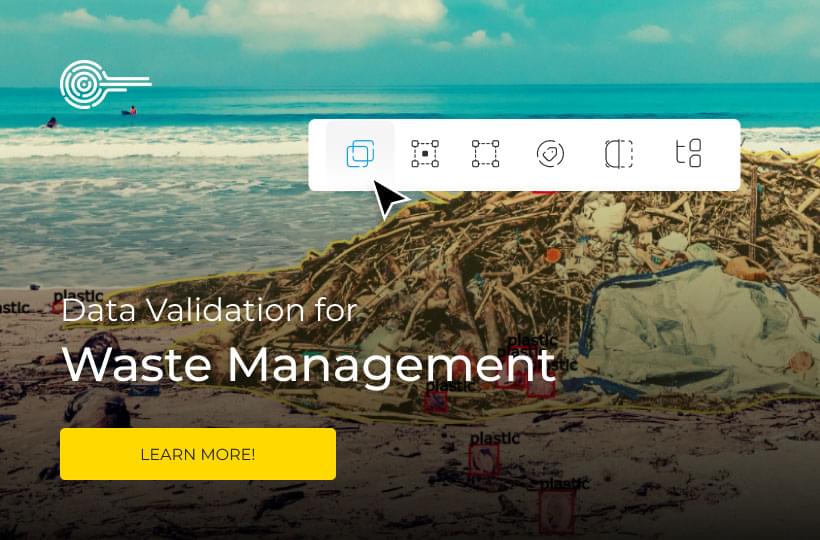Overcoming Challenges in Instance Segmentation: Deep Learning Edition
Instance segmentation is a crucial task in computer vision, as it enables the accurate identification and delineation of individual objects within an image. Traditional image processing methods often struggle with distinguishing between multiple objects of the same class, which can lead to inadequate interpretations of visual data. Instance segmentation goes beyond mere object detection by providing pixel-level precision in outlining each object, allowing for a deeper understanding of complex visual scenes.
This article will explore various instance segmentation techniques, such as single-shot instance segmentation and transformer- and detection-based methods. We will also discuss the practical applications of instance segmentation in fields like medical imaging and autonomous vehicles, as well as the challenges involved in implementing this technique.
Key Takeaways:
- Instance segmentation enables accurate identification and delineation of individual objects within an image.
- Pixel-level precision in outlining each object provides a deeper understanding of visual scenes.
- Challenges in instance segmentation include distinguishing between multiple objects of the same class.
- Practical applications of instance segmentation include medical imaging and autonomous vehicles.
- Various techniques can be employed for instance segmentation, such as single-shot, transformer-based, and detection-based methods.

Types of Image Segmentation
Image segmentation is a fundamental task in computer vision that aims to partition an image into meaningful regions. It plays a crucial role in various applications, ranging from autonomous vehicles to medical imaging. There are different types of image segmentation techniques that provide different levels of granularity and understanding of visual data. Some of the prominent types include semantic segmentation, instance segmentation, panoptic segmentation, and meaningful regions.
Semantic Segmentation
Semantic segmentation focuses on classifying each pixel in an image into predefined categories. It provides a high-level understanding of the scene by assigning a label to every pixel based on its semantic meaning. This type of segmentation enables applications such as scene understanding, object recognition, and scene parsing.
Instance Segmentation
Instance segmentation takes semantic segmentation a step further by not only classifying pixels but also identifying and delineating individual objects within an image. It assigns a unique label to each pixel to differentiate between different instances of the same class. Instance segmentation provides pixel-level precision and is essential for tasks like object tracking, image-to-text conversion, and object counting.
Panoptic Segmentation
Panoptic segmentation combines the benefits of both semantic and instance segmentation. It aims to provide a comprehensive understanding of the scene's overall composition by not only classifying pixels semantically but also identifying and delineating individual instances of objects. Panoptic segmentation allows for a more detailed understanding of visual scenes while capturing both the semantic context and instance-level information.
Meaningful Regions
Meaningful region segmentation aims to partition an image into regions that have semantic or contextual significance. This type of segmentation focuses on identifying and extracting regions that are visually distinctive or convey specific visual information. It can be used for various applications, such as image editing, content-based image retrieval, and visual saliency analysis.
Comparison of Image Segmentation Techniques
| Segmentation Technique | Methodology | Advantages | Applications |
|---|---|---|---|
| Semantic Segmentation | Classification of pixels into predefined categories |
|
|
| Instance Segmentation | Identification and delineation of individual objects |
|
|
| Panoptic Segmentation | Combines semantic and instance segmentation |
|
|
| Meaningful Regions | Partitioning of visually distinctive or contextually significant regions |
|
|
Instance Segmentation Techniques
Instance segmentation techniques play a crucial role in accurately detecting and delineating individual objects within an image. These techniques enable the identification and precise segmentation of objects, providing detailed insights into complex visual scenes.
Single-shot Instance Segmentation
Single-shot instance segmentation methods offer real-time object detection and segmentation capabilities. They excel in quickly and accurately identifying objects within an image. These methods utilize efficient architectures and algorithms to achieve fast and reliable instance segmentation results.
Transformer-based Methods
Transformer-based methods leverage the self-attention mechanism to capture intricate relationships between pixels in an image. By modeling pixel dependencies effectively, these methods can achieve higher accuracy in instance segmentation tasks. Transformers have shown great potential in various computer vision tasks, including image classification, object detection, and semantic segmentation.
Detection-based Instance Segmentation
Detection-based instance segmentation combines object detection and segmentation into a unified framework. It involves first detecting objects within an image, followed by accurately delineating and segmenting each detected object. This approach allows for accurate and detailed object segmentation and is widely used in state-of-the-art instance segmentation models.
| Instance Segmentation Technique | Key Features |
|---|---|
| Single-shot Instance Segmentation | Real-time object detection and segmentation |
| Transformer-based Methods | Effective modeling of pixel dependencies |
| Detection-based Instance Segmentation | Unified framework combining detection and segmentation |
Understanding Segmentation Models: U-Net and Mask R-CNN
When it comes to medical image segmentation, two popular models stand out: U-Net and Mask R-CNN. These models have revolutionized the field by enabling precise object segregation and accurate localization within medical images.
The U-Net Model
The U-Net model, named after its U-shaped architecture, has gained tremendous popularity due to its effectiveness in medical image segmentation. The model consists of two parts: a contracting path and an expanding path. The contracting path captures high-level features and reduces the spatial resolution, while the expanding path uses a combination of upsampling and skip connections to recover the spatial information.
By combining the contracting and expanding paths, U-Net can effectively localize objects and provide contextual information. This makes it particularly suitable for segmenting tumors, organs, and abnormalities in medical images with pixel-level precision.
The Mask R-CNN Model
Mask R-CNN, on the other hand, is a state-of-the-art model for instance segmentation. It extends the popular Faster R-CNN model by adding a branch for predicting segmentation masks for each detected object.
The architecture of Mask R-CNN typically involves a backbone network, such as ResNet or VGG, for extracting high-level features from the input image. These features are then used to generate region proposals, which are refined through a region of interest (RoI) align layer. Finally, the RoI-aligned features are fed into a network that predicts both the class labels and segmentation masks for each object.
With its ability to precisely segregate objects within an image, Mask R-CNN has found applications in various domains, including medical imaging, autonomous vehicles, and object tracking. It provides accurate and detailed instance segmentation, allowing for a more comprehensive understanding of complex visual scenes.
Medical image segmentation requires precise object identification to effectively analyze and interpret critical structures within the image. Models like U-Net and Mask R-CNN have paved the way for advancements in this field, offering powerful tools for accurate and detailed segmentation of medical images.

Conclusion
Distributed deep learning is a promising approach for training and deploying large and complex deep learning models. It offers the ability to handle vast amounts of data, scalability, and fault tolerance, making it ideal for tackling instance segmentation challenges. By optimizing models like the YOLACT instance segmentation model and deploying them on big data clusters, we can achieve enhanced performance and scalability.
Tools and frameworks such as OpenVINO and BigDL provide the necessary support for optimization and distributed deep learning. These tools enable researchers and practitioners to efficiently utilize distributed resources for training and deploying instance segmentation models. It is crucial to choose the right instance segmentation technique and model based on the specific requirements and constraints of the task at hand.
As advancements in deep learning continue, including distributed learning approaches for handling massive datasets, the field of instance segmentation will benefit from improved optimization techniques and the utilization of big data clusters. This will ultimately lead to more accurate, efficient, and scalable object detection and segmentation across various applications.
FAQ
What is instance segmentation?
Instance segmentation is a computer vision task that accurately identifies and delineates individual objects within an image by assigning a unique label to each pixel. It goes beyond object detection by providing pixel-level precision in outlining each object.
How is instance segmentation different from semantic segmentation?
In semantic segmentation, the goal is to classify each pixel in an image into predefined categories to understand the scene's context. Instance segmentation, on the other hand, precisely identifies and delineates individual objects within an image, differentiating between different instances of the same class.
What are some techniques used in instance segmentation?
Techniques used in instance segmentation include single-shot instance segmentation, which offers real-time object detection and segmentation capabilities; transformer-based methods, which leverage the self-attention mechanism to capture relationships between pixels; and detection-based instance segmentation, which combines object detection and segmentation for accurate and detailed object segmentation.
Which models are commonly used for medical image segmentation?
U-Net is a popular model for medical image segmentation. Its architecture combines contracting and expanding paths to enable accurate localization and context information. Mask R-CNN, on the other hand, excels in instance segmentation, enabling precise object segregation within an image by predicting segmentation masks for each detected object.
How can distributed deep learning improve instance segmentation?
Distributed deep learning is a promising approach for training and deploying large and complex deep learning models. Optimizing models like YOLACT and deploying them on big data clusters can lead to improved performance and scalability in instance segmentation tasks.
